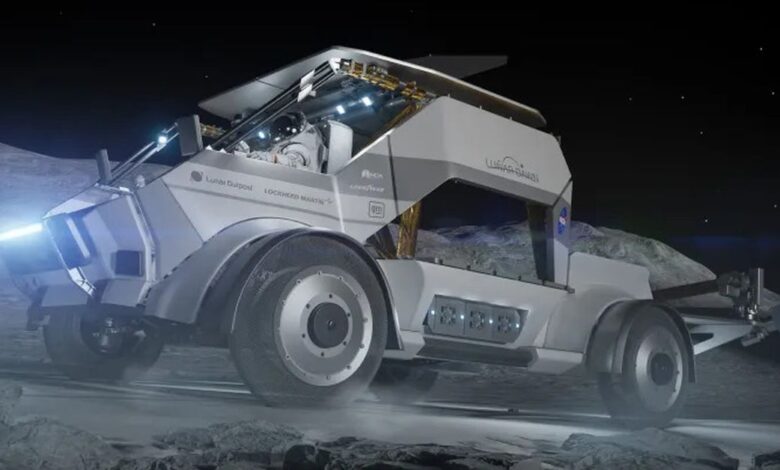NASA picks three companies to develop a Moon car for Artemis astronauts

NASA has selected Intuitive Machines, Lunar Outpost, and Venturi Astrolab to develop the lunar terrain rover for its Artemis lunar explorations. All three companies are in the running for task orders with a potential value of $4.6 billion over the next 13 years.
The trio will develop their team’s ideas for a Lunar Terrain Vehicle (LTV) to help astronauts explore the Moon’s south polar region. It’s believed the area contains frozen water, so it makes sense for NASA to set up base camp there.
All three must design vehicles that can accommodate two suited astronauts and handle the area’s extreme conditions. They also must feature robotic, remote operation capabilities so NASA can continue to perform tests and explore even when astronauts aren’t on the Moon.
:format(webp)/cdn.vox-cdn.com/uploads/chorus_asset/file/25369935/intuitivemachines.jpg)
:format(webp)/cdn.vox-cdn.com/uploads/chorus_asset/file/25369934/lunar_outpost.jpg)
:format(webp)/cdn.vox-cdn.com/uploads/chorus_asset/file/25369937/astronaut.jpg)
1/3
Image: Intuitive Machines
The next step for them is to undertake “a feasibility task order, which will be a year-long special study to develop a system that meets NASA’s requirements through the preliminary design maturity project phase.” Then, NASA will request a proposal for a demonstration mission to continue development, deliver their LTV to the Moon’s surface, then validate performance and safety before the Artemis V mission.
“We will use the LTV to travel to locations we might not otherwise be able to reach on foot, increasing our ability to explore and make new scientific discoveries,” said Jacob Bleacher, chief exploration scientist in the Exploration Systems Development Mission Directorate at NASA Headquarters in Washington. “With the Artemis crewed missions, and during remote operations when there is not a crew on the surface, we are enabling science and discovery on the Moon year-round.”
Intuitive Machines recently made headlines after becoming the first private aerospace company to land a spacecraft on the Moon. It was also the first lunar lander from the US to reach the Moon’s surface in over 50 years, albeit on its side.
NASA’s Artemis program aims to create a sustainable presence near the Moon ahead of its larger goal of one day preparing for human missions to Mars. The initiative was launched after former Vice President Mike Pence challenged NASA to put people on the Moon by 2024. Since then, the Artemis II mission has been pushed to September 2025, with the landing mission, Artemis III, now planned for September 2026.



